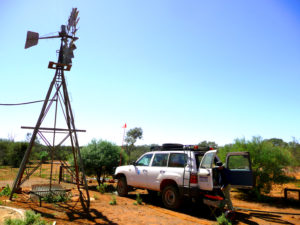It’s not a question of sparkling or still, but rather how minerals dissolved in water can reveal hidden ore deposits.
 We might like our mineral water sparkling or still, but geochemists prefer theirs dissolved. And no, not because it tastes good (although to be fair we haven’t tried it yet) but because minerals dissolved in groundwater can reveal hidden ore deposits beneath the surface.
We might like our mineral water sparkling or still, but geochemists prefer theirs dissolved. And no, not because it tastes good (although to be fair we haven’t tried it yet) but because minerals dissolved in groundwater can reveal hidden ore deposits beneath the surface.
This is because groundwater interacting with mineralised rock picks up traces of its geochemistry, creating a characteristic mineral signature
Our team of scientists in Western Australia, led by David Gray, have recently had a breakthrough discovery while sampling the groundwater around the Yilgarn Craton. They’ve found ‘mineral signatures’ in the water correlated with areas of known mineral deposits of gold, nickel, zinc and copper.
Not only did the team successfully trial this approach in well explored regions of the Yilgarn craton, they also discovered mineral signatures pointing to two new, previously unknown regions of prospective interest. Our tests help to show that we can provide valuable information to mineral exploration companies, by helping them narrow down areas that are rich in ore deposits.

A 4 wheel drive field research vehicle parked near a water windmill in the outback of Australia
Our scientists have been testing groundwater in the Yilgarn Craton in Western Australia looking for mineral signatures related to buried ore bodies.
With drilling costs around $200 per metre and a typical large scale drilling program of tens of thousands of metres, narrowing down the search area is critical if exploration is to be economically viable.
With most of our easily mineable resources already discovered near the surface, prospectors are now looking deeper for the next big mineral finds.
The discovery of mineral signatures in groundwater is one example of how our researchers are providing tools, technologies and techniques to guide successful exploration and resource discoveries beneath the cover of deeply weathered rocks that have hidden them in the past.
You can access the data from the Yilgarn Craton sampling via Auscope.
You can dig up more of our exciting mineral discovery and exploration work here.


28th May 2016 at 8:48 am
Interesting, but the link to Auscope doesn’t seem to work. Is there a public report or paper that deceived the technique?
4th July 2016 at 1:13 pm
The AuScope link should be http://portal.auscope.org.au